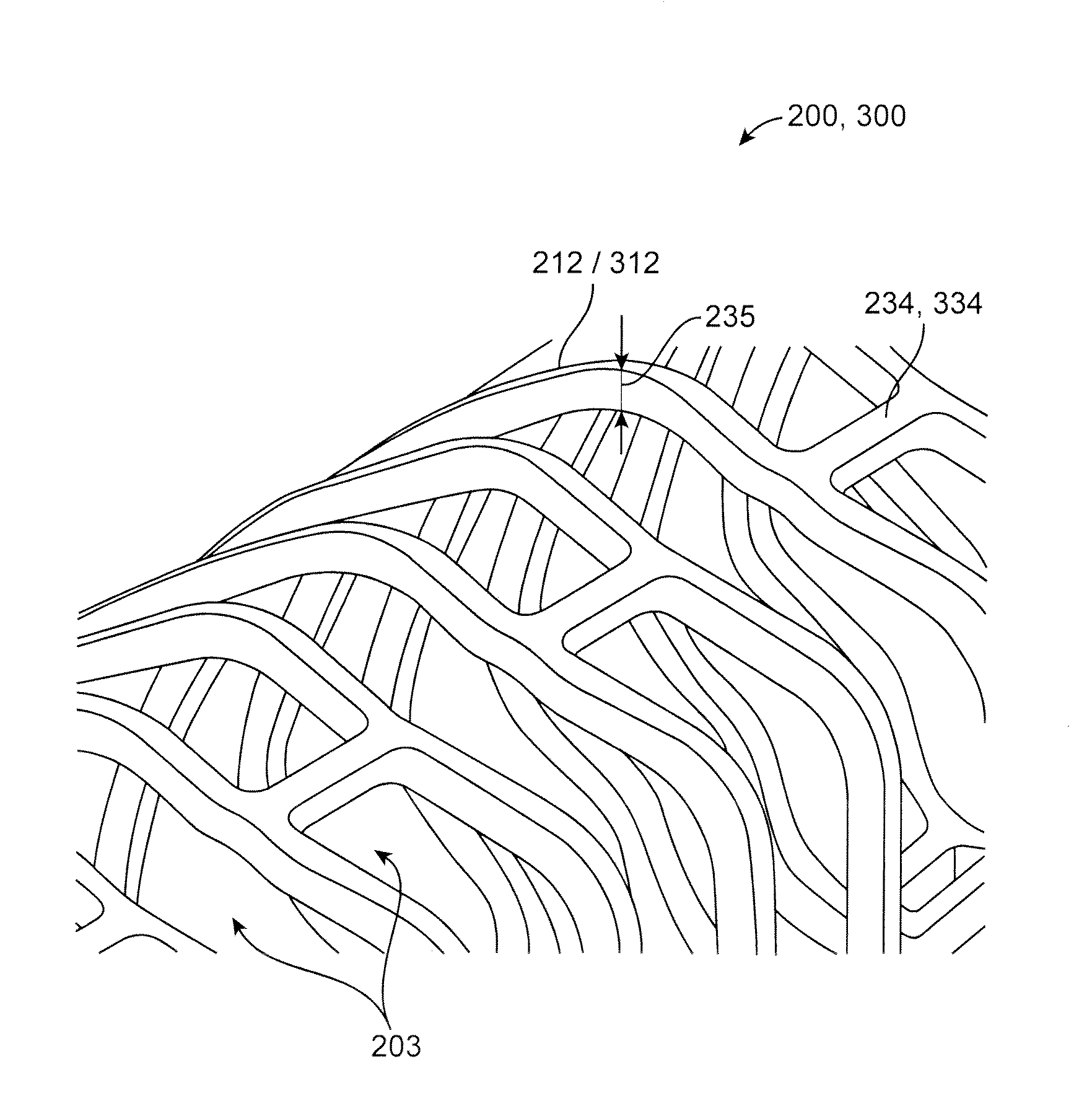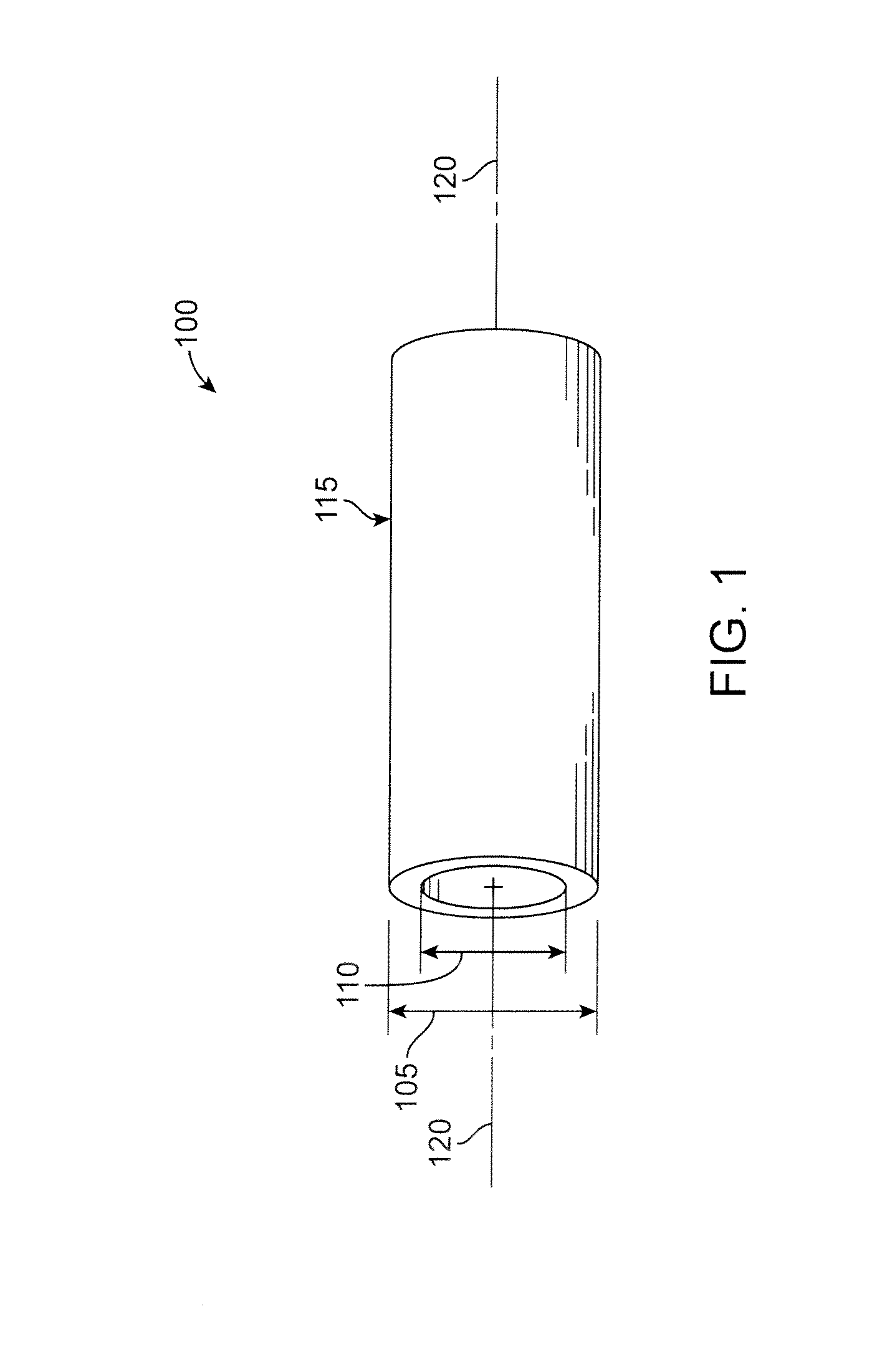Polymer Scaffolds Having Enhanced Axial Fatigue Properties
a polymer scaffold and axial fatigue technology, applied in the field of drugeluting medical devices, can solve the problems of numerous challenges, unfavorable stent expansion, significant effect on the overall ability of the stent, etc., and achieve the effect of maintaining the structural integrity of the vessel and high degree of total strain
- Summary
- Abstract
- Description
- Claims
- Application Information
AI Technical Summary
Benefits of technology
Problems solved by technology
Method used
Image
Examples
Embodiment Construction
[0044]The disclosure proceeds as follows. First, definitions of terms that may be used during the course of the subsequent disclosure are explained. Embodiments of processes for forming a deformed polymer tube from a precursor are provided. According to the disclosure, the crush recoverable and balloon expandable scaffold is cut from a tube (FIG. 1) formed through a process intended to enhance mechanical properties of the scaffold including fracture toughness. A discussion of this process, followed by a discussion of a study conducted to determine a best or improved biaxial expansion for a tube made into a scaffold. Finally, two preferred scaffold designs are disclosed.
[0045]For purposes of this disclosure, the following terms and definitions apply:
[0046]The term “about” means 10%, 5%, or 2% less or more than a stated value, or a one-sigma variation from a stated mean value.
[0047]“Reference vessel diameter” (RVD) is the diameter of a vessel in areas adjacent to a diseased section of...
PUM
| Property | Measurement | Unit |
|---|---|---|
| Fraction | aaaaa | aaaaa |
| Fraction | aaaaa | aaaaa |
| Fraction | aaaaa | aaaaa |
Abstract
Description
Claims
Application Information
 Login to View More
Login to View More - R&D
- Intellectual Property
- Life Sciences
- Materials
- Tech Scout
- Unparalleled Data Quality
- Higher Quality Content
- 60% Fewer Hallucinations
Browse by: Latest US Patents, China's latest patents, Technical Efficacy Thesaurus, Application Domain, Technology Topic, Popular Technical Reports.
© 2025 PatSnap. All rights reserved.Legal|Privacy policy|Modern Slavery Act Transparency Statement|Sitemap|About US| Contact US: help@patsnap.com



